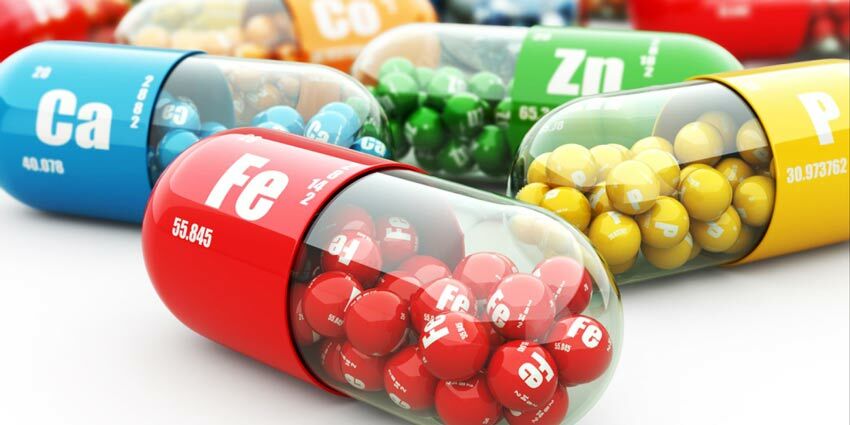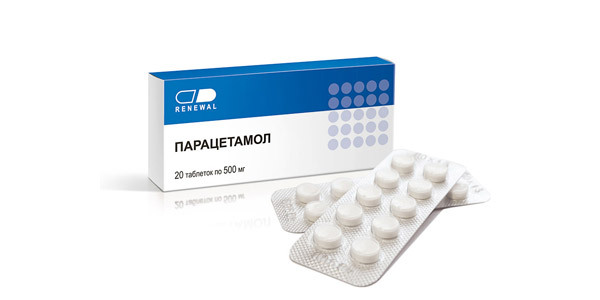
Page contents
- 1 Paracetamol tablets and syrup - pharmacological action
- 2 Forms - tablets, syrup, suppositories, suspension
- 3 Analogues
- 4 Indications for use
- 5 Instruction for use
- 6 Paracetamol for children
- 7 Feedback on the drug Paracetamol
Paracetamol is a widespread non-narcotic analgesic from the group of non-steroidal anti-inflammatory drugs, which has antipyretic, analgesic and anti-inflammatory effects( weak).It is used for the treatment of adults and children in the complex treatment of colds. Effectively lowers the temperature and eliminates pain syndrome. In addition, it copes well with headache, dental, menstrual pain, symptoms of neuralgia.
The main advantage of the drug is its low toxicity. As defined by WHO, it is considered one of the safest and most effective medicines and is widely used to treat children. At the same time, doctors warn that long-term use of the drug may adversely affect the functioning of the liver and kidneys. We will tell more in detail about features of the given medicine and the instruction on its application for children and adults.
Paracetamol tablets and syrup - pharmacological action
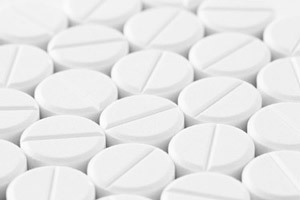 The main active substance of the drug is paracetamol( para-acetaminophenol).The tablet of the flat-cylindrical form with the risk and facet, white color contains 0.2 g of paracetamol. The therapeutic effect of the drug is based on inhibition of the synthesis of chemical compounds responsible for the development of inflammation and contributing to fever and the development of pain syndrome. The result of its effect on neurons of the central nervous system is an anesthetic and anti-inflammatory effect. The drug, in contrast to other anti-inflammatory drugs does not have a strong irritant effect on the gastric mucosa.
The main active substance of the drug is paracetamol( para-acetaminophenol).The tablet of the flat-cylindrical form with the risk and facet, white color contains 0.2 g of paracetamol. The therapeutic effect of the drug is based on inhibition of the synthesis of chemical compounds responsible for the development of inflammation and contributing to fever and the development of pain syndrome. The result of its effect on neurons of the central nervous system is an anesthetic and anti-inflammatory effect. The drug, in contrast to other anti-inflammatory drugs does not have a strong irritant effect on the gastric mucosa.
Ingestion Paracetamol is absorbed rather quickly, its highest content in the blood is noted after 30 minutes, and the maximum effect from the application is observed after 1-1,5 after administration. The active substance is cleaved in the liver, forming metabolites as intermediate products of metabolism. Some of them have increased toxicity. This feature limits the use of analgesic in diseases of the blood and liver. The drug is excreted from the body with urine, therefore, if the kidney function is impaired, Paracetamol is undesirable.
 The analgesic has a pronounced antipyretic effect, so it is widely used to reduce temperature and arrest pain, not associated with the inflammatory process( headache, toothache).With regard to pain, the appearance of which provokes a pronounced inflammatory process, Paracetamol is not effective( joint, muscle pains, injuries and bruises).
The analgesic has a pronounced antipyretic effect, so it is widely used to reduce temperature and arrest pain, not associated with the inflammatory process( headache, toothache).With regard to pain, the appearance of which provokes a pronounced inflammatory process, Paracetamol is not effective( joint, muscle pains, injuries and bruises).
The analgesic is available in different dosage forms, so if you need to get a curative effect as soon as possible, you can use the drug in the form of a syrup, suspension or suppository.
Forms - tablets, syrup, suppositories, suspension
Paracetamol is one of the most widely used and available drugs in the world, it is manufactured in the following forms:
- Tablets( paracetamol 200 , 325, 500 mg)
- Capsules coated with a coating( paracetamol325, 500 mg)
- Effervescent tablets for solution( paracetamol 500mg)
- Solution for injection
- Paracetamol syrup for children
- Paracetamol suspension for children and adults
- Rectal suppositories with paracetamol for children and adults with sodazhaniem active substance from 50 mg( children) to 500 mg( for adults).
Analogues
Paracetamol has many analogues containing the same active substance. They are produced by many pharmaceutical companies under different brands. Here we give only some analogues of Paracetamol: 
- Atsetofen
- Aminadol
- Aminofen
- Apamid
- Apanol
- Biotsetamol
- Valadol
- Valorin
- Deminofen
- Dolamin
- Metamol
- Mialgin
- Paramol
- Panadol Junior
- Pirinazin
- Tempramol
- Febridol
- Hemtsetafen
- Tselifen
- Efferalgan
All these varieties of drugs are combined with one actingsubstance - paracetamol and instruction on the use of all these drugs is the same. Further in the article, we will use the generic name Paracetamol, without giving specific commercial names given by manufacturers to indicate the analogs of this drug.
Indications for use
 All dosage forms of the drug are intended to provide a similar therapeutic effect and have the same indications for use.
All dosage forms of the drug are intended to provide a similar therapeutic effect and have the same indications for use.
The drug is used for body temperature rises up to 37-39 ° C and a pain symptom accompanying diseases of an infectious and inflammatory nature. Instructions for use Paracetamol indicates that this remedy is effective in eliminating pain of various origins( headache, dental, with neuralgia, myalgia, arthralgia, algodismenorrhea).In pediatrics, the drug, in addition to the main purpose, can be used to relieve pain in the gums during teething in children.
It should be remembered that the analgesic only eliminates painful symptoms, but the very cause of the pathological condition does not heal. Therefore, it is used as part of complex therapy in the treatment of the underlying disease.
Instructions for use
 How should I take Paracetamol? Tablets taken internally in whole form or, breaking in half, and washed down with a large amount of water( not less than 150 ml).The drug is drunk 2-4 times a day, the time interval between doses should be at least 4 hours. It is best to take the medicine at regular intervals, this will help to avoid exacerbation of the pain syndrome and unwanted temperature changes. A single dose for adults is 200 to 1000 mg, the daily dose should not exceed 4 grams.
How should I take Paracetamol? Tablets taken internally in whole form or, breaking in half, and washed down with a large amount of water( not less than 150 ml).The drug is drunk 2-4 times a day, the time interval between doses should be at least 4 hours. It is best to take the medicine at regular intervals, this will help to avoid exacerbation of the pain syndrome and unwanted temperature changes. A single dose for adults is 200 to 1000 mg, the daily dose should not exceed 4 grams.
Patients suffering from impaired renal function, the drug is prescribed in a minimal dosage. A single dose of 250 mg, a daily dose of 1500 mg, the interval between doses should be increased to 8 hours. Paracetamol tablets are intended only for adults and children over 12 years of age who have a body weight of at least 50 kg.
Paracetamol syrup or suspension is for children. Before use, they should be thoroughly shaken, measure the required amount of the drug with a measuring spoon and after taking a large amount of water to drink. The syrup can be diluted with water, it will facilitate reception, the suspension to dissolve in water is not recommended.
The fastest therapeutic result is achieved after taking a syrup or a suspension. Therefore, if the patient needs an urgent antipyretic and analgesic effect, the drug should be taken exactly in this form. Paracetamol tablets have a therapeutic effect later - after 20-30 minutes.
 All dosage forms of Paracetamol should be taken 1-2 hours after meals. If you drink the drug on an empty stomach, you can provoke unwanted side effects from the digestive tract.
All dosage forms of Paracetamol should be taken 1-2 hours after meals. If you drink the drug on an empty stomach, you can provoke unwanted side effects from the digestive tract.
The maximum duration of use of the drug should not exceed 3 days. If there is a need for a longer course of treatment, you need to do this after consulting a doctor.
Paracetamol suppositories are injected into the rectum, the necessary dosage and treatment plan is selected by the physician. The drug is used as necessary from 1 to 4 times a day, the intermediate interval should be 4 hours. The maximum dosage for adults is up to 4000 mg per day. Paracetamol suppositories are prescribed in cases when taking the drug inside is undesirable, or in the treatment of young children who refuse to swallow the drug in the form of a suspension or syrup.
The effect of using candles comes much faster than when taking tablets. Without consulting a doctor, it is forbidden to use rectal suppositories to lower the temperature for more than 3 days, to eliminate pain - longer than 5 days.
Paracetamol for children
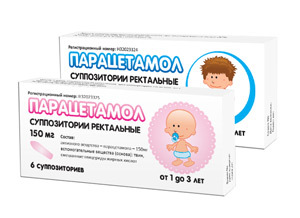 Paracetamol for children is prescribed as a syrup, suspension or rectal suppository. Children's forms of the drug are characterized by a lower content of the active substance. Suspension or syrup is measured with a measuring spoon. After the child has swallowed the medicine, he is allowed to drink enough water. Apply the medicine as needed( 3-4 times a day), trying to observe equal time intervals between doses. The medicine should be given to the kids 1 hour after eating.
Paracetamol for children is prescribed as a syrup, suspension or rectal suppository. Children's forms of the drug are characterized by a lower content of the active substance. Suspension or syrup is measured with a measuring spoon. After the child has swallowed the medicine, he is allowed to drink enough water. Apply the medicine as needed( 3-4 times a day), trying to observe equal time intervals between doses. The medicine should be given to the kids 1 hour after eating.
The preparation in the form of candles is gently injected into the anus, placing the baby on the tummy and slightly lifting the buttocks. Pediatricians are advised to use children's forms of the drug in a certain order, depending on the condition of the child. If the baby's temperature has risen sharply to 38 ° C, it is best to use rectal suppositories. In cases where the temperature rises above 38 ° C, it is recommended to immediately give a suspension. The maximum permitted duration of treatment for pediatric paracetamol without a doctor's consultation should not exceed 3-5 days.
The analgesic is approved for use in children, starting from the age of three months, it is one of the safest analgesic and antipyretic agents. But this does not mean that it can be taken uncontrollably, it is necessary to accurately observe the dosage and the time interval between doses.
Many parents are interested in how much to give Paracetamol to a child so as not to cause unwanted complications and side reactions. When treating children the required dose of the drug should be determined by the pediatrician, it depends on the body weight and age of the baby. We give single doses of the drug for children of different ages:
- Up to 3 months - no more than 10 mg per 1 kg of body weight
- From 3 to 12 months - 60-120 mg
- 1 to 5 years - 120-250mg
- From 6up to 12 years - 250-500mg
This list lists single doses of the drug, it is understood that they should be taken 2 to 4 times a day, depending on the condition of the child. In any case, do not self-medicate and with a rise in temperature and a change in the state of the baby, it should immediately appear to the pediatrician. The doctor will professionally prescribe the necessary dosage and determine the duration of treatment.
Paracetamol during pregnancy
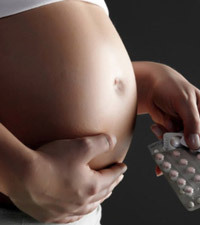 During pregnancy, Paracetamol is administered with caution, as medical studies have established that the use of the drug in the second half of pregnancy increases the risk of future child developing various respiratory disorders, allergies and asthma. If necessary, the doctor should prescribe the drug in safe dosages and individually, taking into account the condition of the woman.
During pregnancy, Paracetamol is administered with caution, as medical studies have established that the use of the drug in the second half of pregnancy increases the risk of future child developing various respiratory disorders, allergies and asthma. If necessary, the doctor should prescribe the drug in safe dosages and individually, taking into account the condition of the woman.
Paracetamol during pregnancy is able to penetrate the placental barrier and excrete with breast milk, so some toxic effects of the substance on the fetus are possible. If there is a need for the drug during pregnancy or breastfeeding, the doctor should consider the potential risk to the fetus and monitor the treatment process.
Contraindications
Paracetamol should not be prescribed in the presence of the following pathological conditions:
- Hypersensitivity to
- components Intolerance to aspirin or other NSAIDs
- Kidney damage( severe renal failure)
- Inflammatory diseases of the digestive tract
- Liver diseases
- Pregnancy( 3rd trimester)
- Chronic alcoholism
You can not prescribe paracetamol if the patient has gastrointestinal bleeding, or the patient underwent aortocororo surgeryarnomu bypass. In addition, the drug is not prescribed to newborn children under the age of 1 month.
 With special care and under the supervision of a doctor, Paracetamol is used in patients suffering from diabetes mellitus, renal and hepatic insufficiency, viral hepatitis, alcoholic liver damage.
With special care and under the supervision of a doctor, Paracetamol is used in patients suffering from diabetes mellitus, renal and hepatic insufficiency, viral hepatitis, alcoholic liver damage.
The patient should be under the supervision of a specialist while taking Paracetamol and glucocorticosteroids or anticoagulants( warfarin).Overdose of paracetamol can lead to severe liver damage, so specialists try to prescribe a minimally effective dose of the drug and taking it in short courses.
There is evidence that prolonged use of the analgesic significantly increases the risk of developing nephropathy leading to severe renal failure. Uncontrolled use of the drug may cause gastrointestinal bleeding that threatens life. It is especially dangerous to combine the drug with alcohol, it can result in toxic damage to the liver.
Side effects of
If the instructions for use are strictly observed, side effects from taking the drug are rare. Their appearance is explained by hypersensitivity or the presence of concomitant diseases. In the treatment of paracetamol, the following undesirable events may develop:
- Cardiac conduction may be impaired on the part of the cardiovascular system.
-
 From the side of the digestive tract - the occurrence of liver dysfunction, symptoms of dyspepsia.
From the side of the digestive tract - the occurrence of liver dysfunction, symptoms of dyspepsia. - From the hematopoiesis - the development of anemia, changes in blood counts.
- From the side of the urinary system - a malfunction of the kidneys, the symptoms of jade.
- From the side of the immune system - the occurrence of allergic reactions.
Paracetamol is administered with caution when combined with other drugs, since a toxic effect due to their interaction is possible. It is especially dangerous to combine Paracetamol and Analgin. This combination can provoke serious complications: a persistent lowering of body temperature below normal( hypothermia), a collapse state, anaphylactic shock. If the action of Paracetamol is not effective enough, it is recommended to use another anti-inflammatory drug( Ibuprofen, Nurofen, Naise).
Paracetamol is safe when used properly, but if it is necessary to use an anti-inflammatory or antipyretic agent, it is recommended not to self-medicate, but consult a doctor.
Feedback on the use of the drug Paracetamol
Review No. 1
Paracetamol is constantly kept in the home medicine cabinet, it helps me out with any ailments. With catarrhal diseases, he quickly relieves headache and temperature, well removes toothache. Acts quickly, just a few minutes after taking the condition improves, the temperature drops, the pain recedes.
I tried to be treated with different dosage forms. I like the suspension more, it is easy to swallow and the therapeutic effect comes much faster than from the usual tablets. Still like Paracetamol 325, it is available in capsules, they are easy to swallow and the drug acts quickly. So for me this tool is simply irreplaceable.
Larissa, Ekaterinburg
Review No. 2
Paracetamol is used constantly. My daughter was born weak and in early childhood often had colds, with fever, coughing, snot, headaches. Got this drug. I heard that many people are afraid of giving it to children, but with proper application and dosage, there is no harm from it.
Appointments have always been made by a doctor, we strictly observed the treatment schedule, and there were never any side effects. Produced in different forms of the drug, which is very convenient. For a child, I bought Paracetamol in the form of a syrup or suspension, my daughter took it without whims.
Olga, Stavropol Territory
Review No. 3
Paracetamol is always with me, I am often on the road, work is connected with traveling and this drug is constantly available in the car kit. He saved me many times. I take it with headache and toothache, with a cold.
Good temperature, quickly improves well-being and unlike aspirin does not have a harmful effect on the stomach. It is quite inexpensive and is sold in any pharmacy.
Igor, Magnitogorsk

